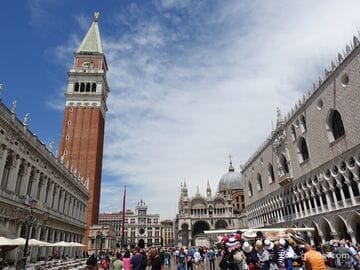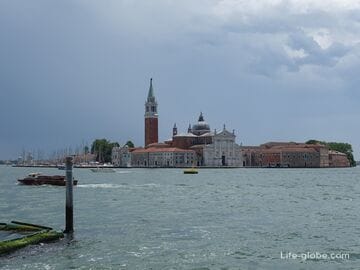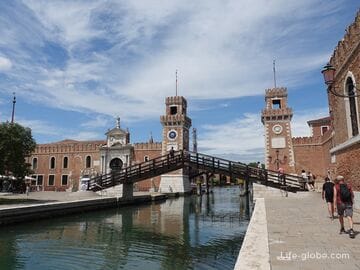The Grand Canal (Canal Grande, Venetian name: Canal Grando) is the main, most famous and largest canal of Venice, crossing the historical center of the city.
The Grand Canal, starting from the lagoon near the Santa Lucia railway station, passes through the entire "main" historical island part of Venice and exits into the San Marco (St. Mark's) basin, thus forming the shape of an inverted letter "S".
The canal is about 3.8 kilometers (2.4 miles) long, 30 to 70 meters (98 to 295 feet) wide, and its average depth is 5 meters (16 feet).
The Grand Canal is crossed by bridges. Along the canal there are unoccupied sections of embankments and along the entire canal there are exquisite buildings of different architectural styles, among which there is an abundance of former palaces and mansions, there are also churches and accommodation facilities (hotels, apartments)
All this creates an unsurpassed ensemble of the channel, the types of which are widely recognized all over the world.
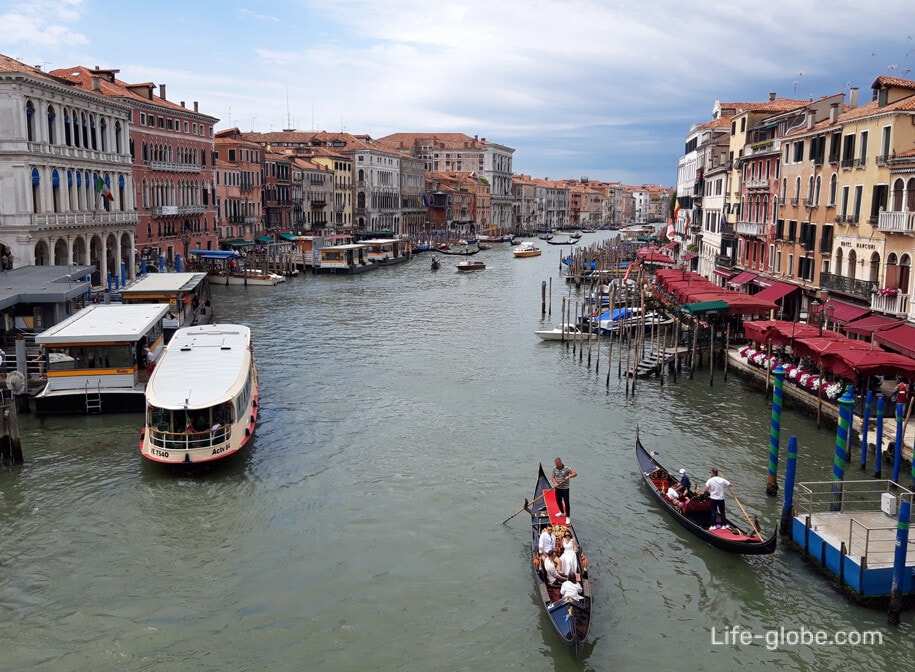
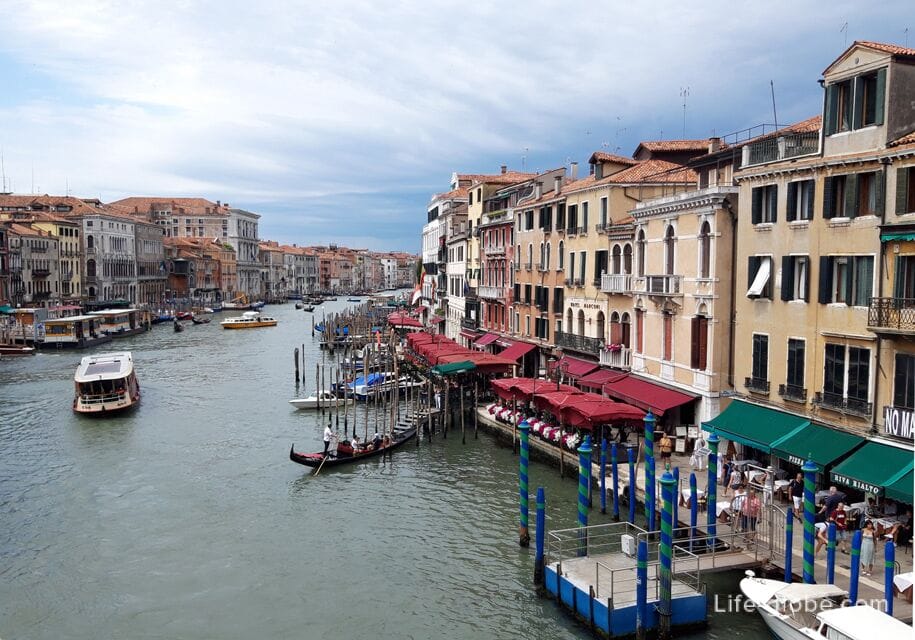
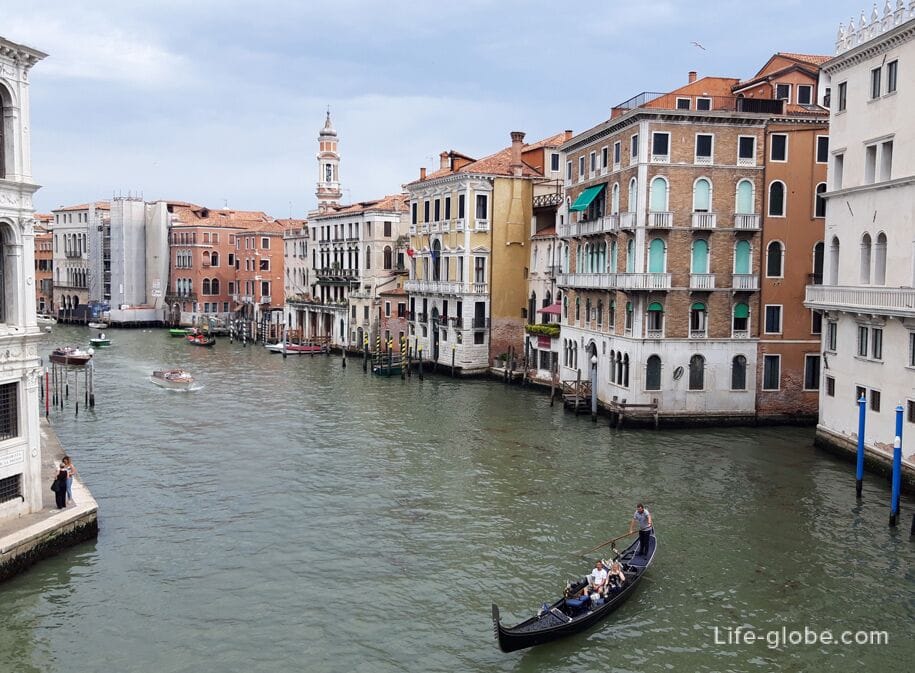
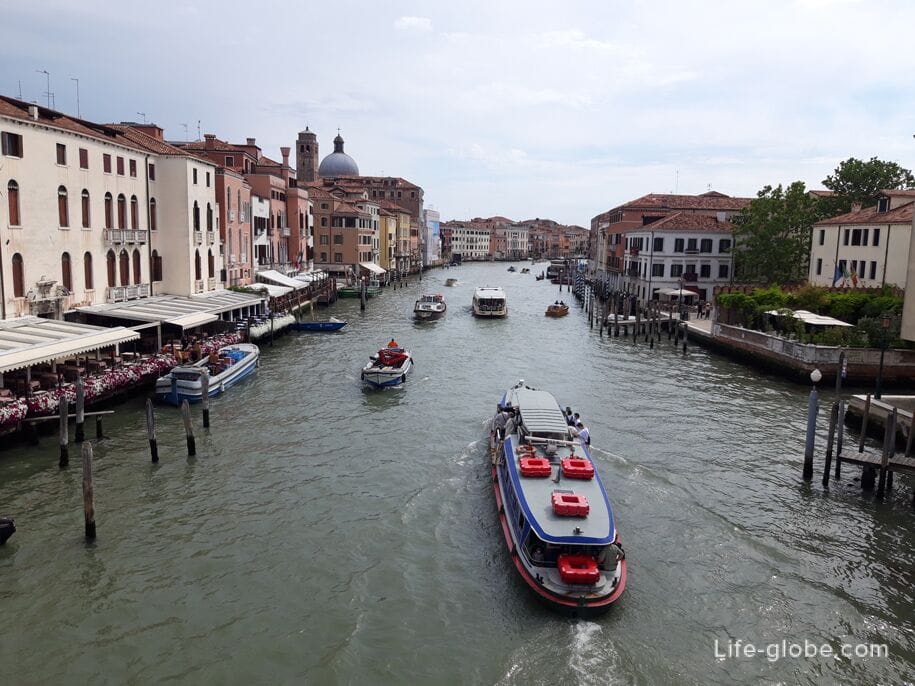
Bridges over the Grand Canal
Four pedestrian bridges span the Grand Canal.
The most famous of the bridges is the Rialto Bridge (Ponte di Rialto, Ponte di Rialto), which is one of the symbols of Venice.
It is the oldest of the four bridges across the canal. The current bridge was completed in 1591.
The bridge is made in the form of an arch, has some decorations and architectural railings. There are benches on the bridge, separated in the center by two powerful arches. Between the rows of shops there are stairs leading to the center of the bridge, starting at the edges of the bridge. The shops sell souvenirs, leather and jewelry. More about the Rialto Bridge...
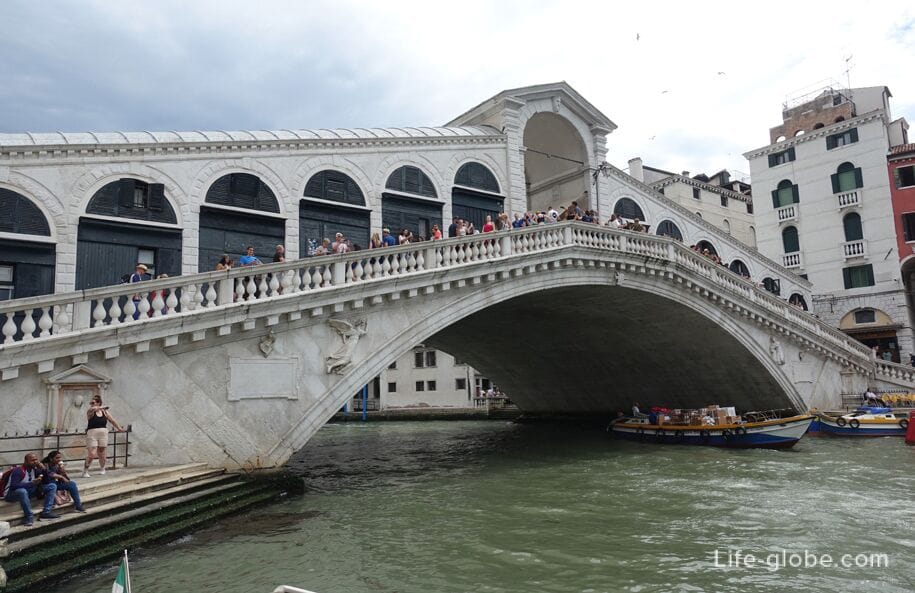
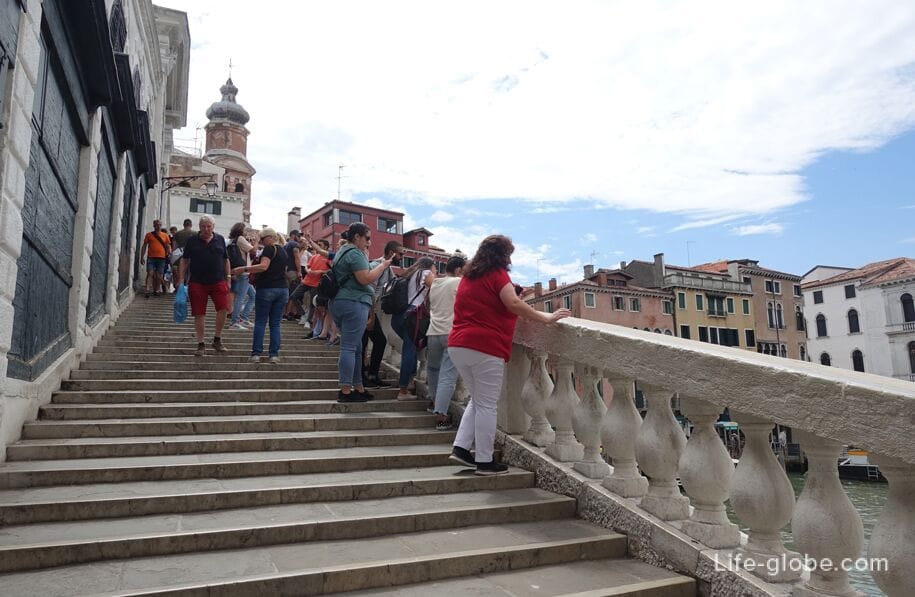
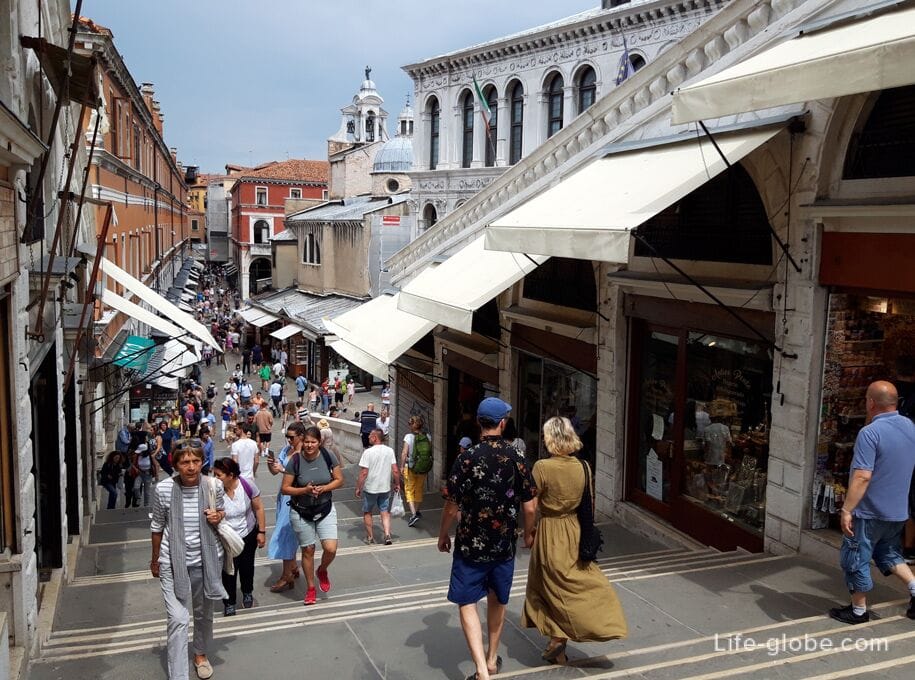
The southernmost of the bridges over the Grand Canal is the Accademia Bridge (Ponte dell'Accademia, Ponte del Accademia).
The bridge is named after the Accademia di Belle Arti di Venezia, which from 1807 to 2004 was housed in the Scuola della Carità together with the Gallerie dell'Accademia, which still exists.
For the first time, a bridge at this place was proposed in 1488. The original steel structure, designed by Alfred Neville, opened on November 20, 1854, but was demolished and replaced by a wooden bridge designed by Eugenio Miozzi and opened in 1933.
The bridge is single-arched.

Northwest of the Rialto Bridge, the Scalzi Bridge (Ponte degli Scalzi, Ponte degli Scalzi) spans the canal.
Translated from Italian, the name of the bridge literally means "Bridge of barefoot (monks)"; and the bridge got this name due to the fact that next to it is the church of Scalzi (barefoot or barefoot monks).
The bridge was built in 1934 by Eugenio Miozzi, thereby replacing the cast-iron bridge built in 1858 by the English engineer Alfred Neville to improve access to the newly built Santa Lucia railway station.
This single-arch bridge made of hewn stone has wide staircases at both ends. More about the Scalzi Bridge...
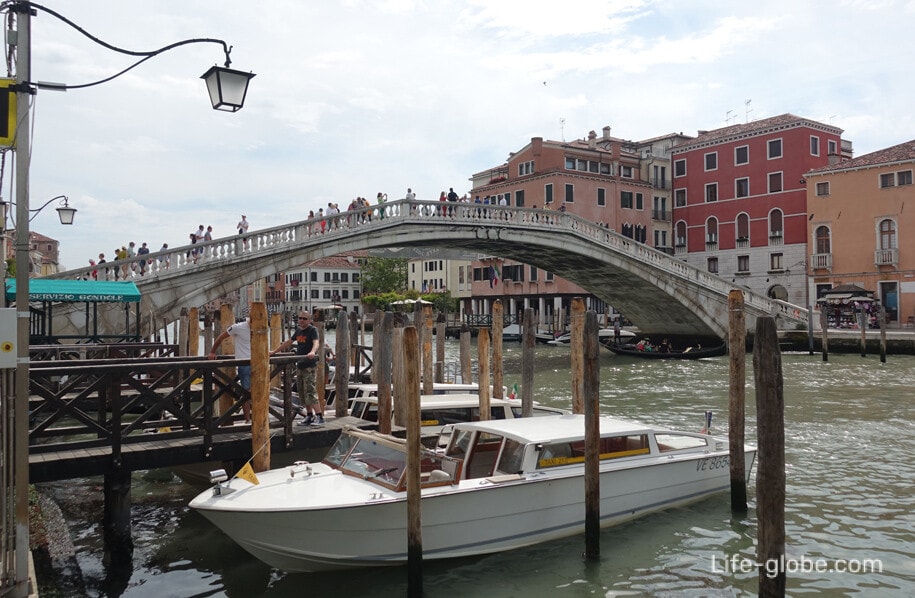

The fourth bridge is the Constitution Bridge (Ponte della Costituzione, Ponte della Costituzione).
The bridge was designed by Santiago Calatrava and installed in 2008. The bridge connects two land transport hubs of the island of Venice: the square in front of the Santa Lucia railway station with Rome Square, where buses arrive.
The name of the bridge "Constitution" was adopted in honor of the 60th anniversary of the Constitution of Italy in 2008. Tourists and locals of Venice also call the bridge the Calatrava Bridge (Ponte di Calatrava) - after the architect.
This modern arch bridge is made of glass and metal.
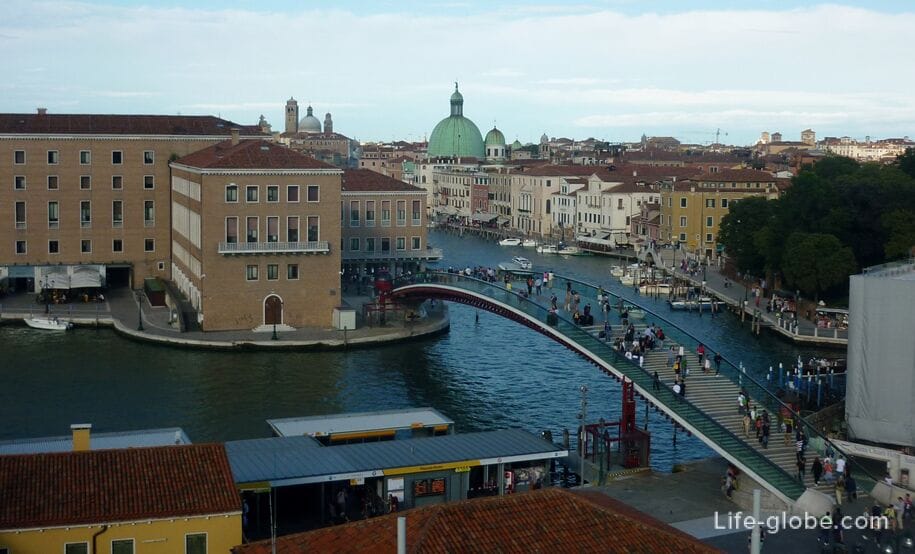
Embankments of the Grand Canal. Moving through the channel
There are almost no embankments (sidewalks) along the Grand Canal and almost all the buildings along the canal approach directly to the water, so it seems that they come directly from the waters of the canal.
One of the few and most visited embankments-sidewalks run near the railway station (Scalzi Bridge) and Rialto Bridge, where there are cafes, restaurants, shops and souvenir shops.

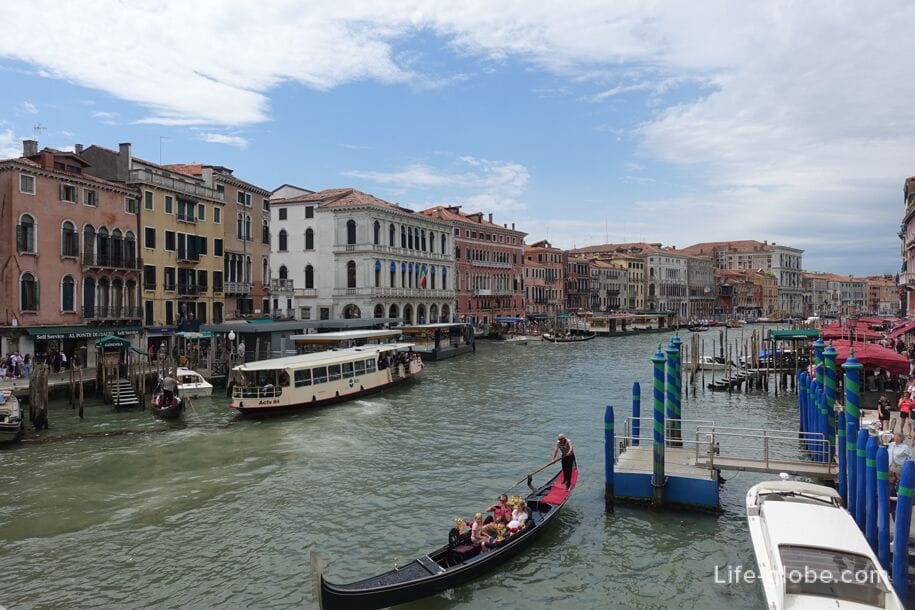
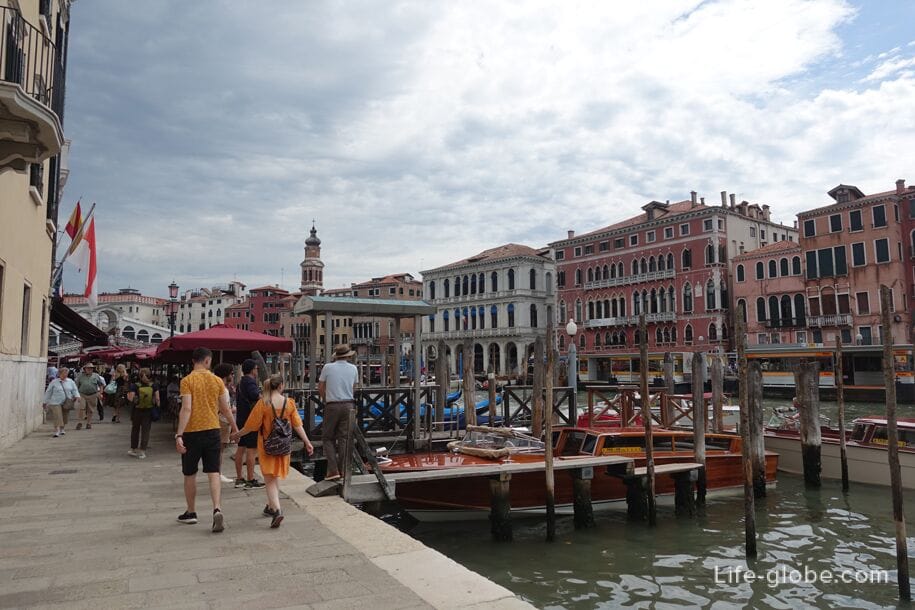
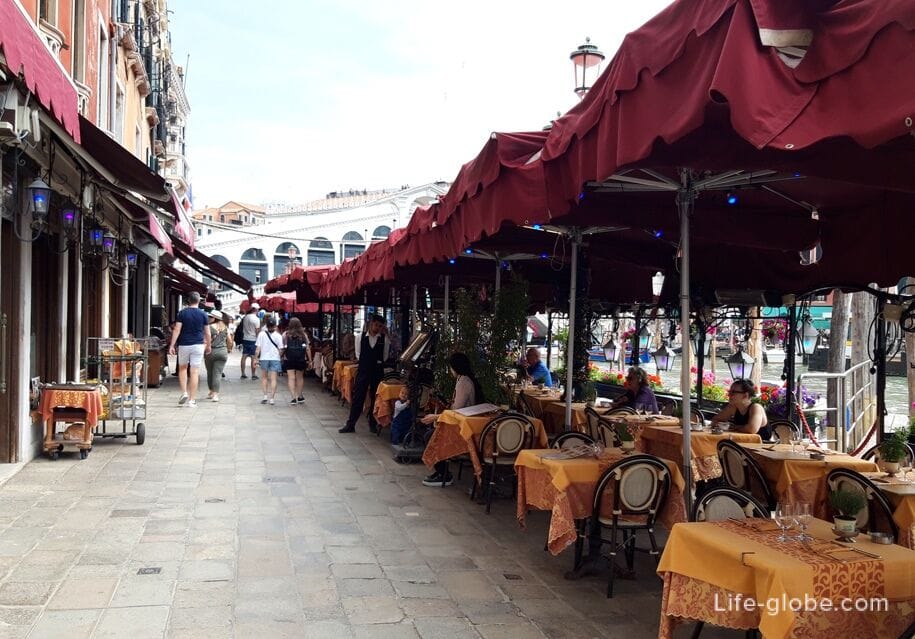
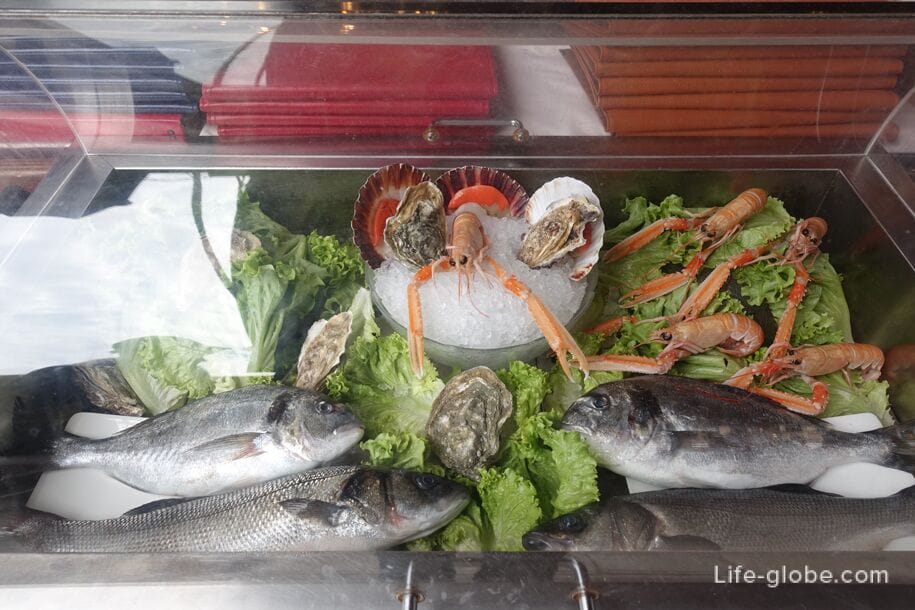
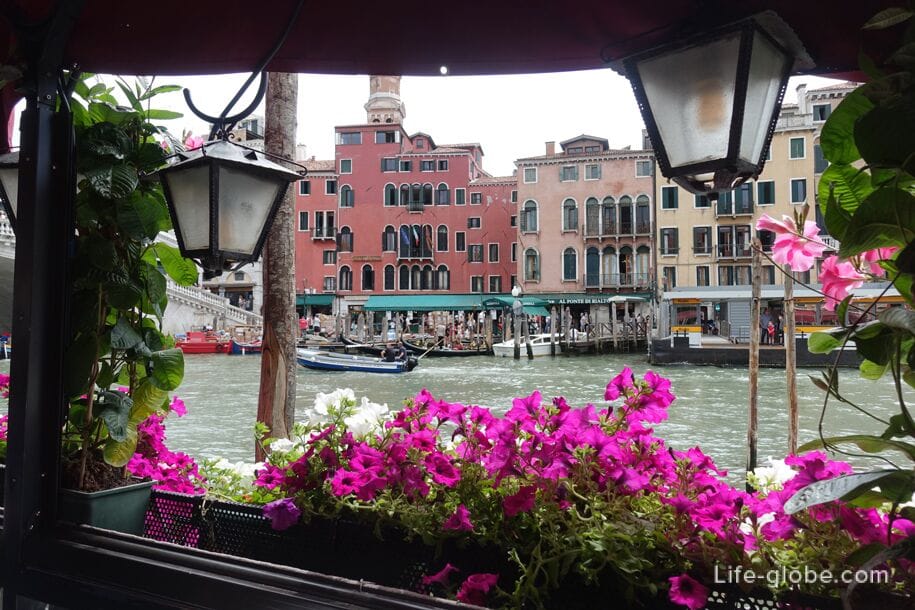
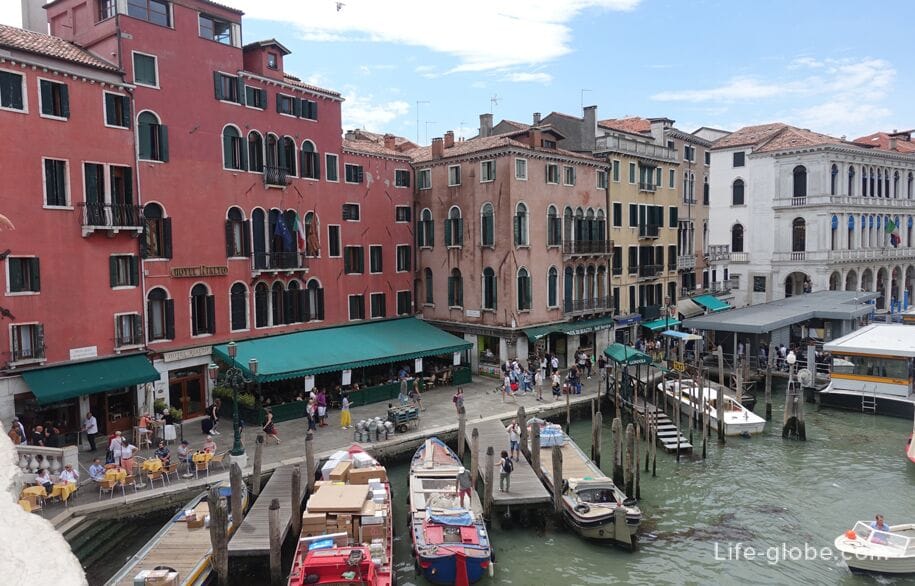
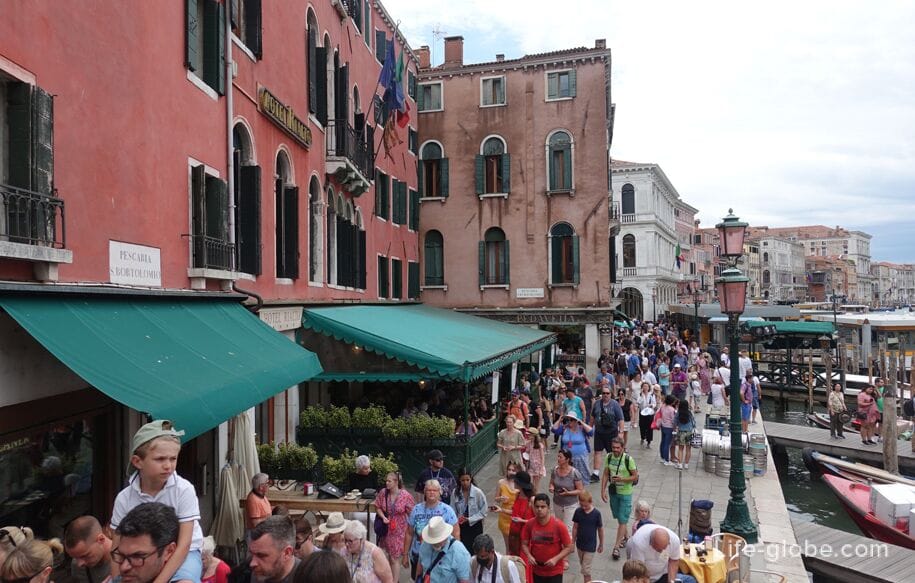
Since most palaces and buildings approach directly to the waters of the canal, it is most convenient to admire the views of the canal and its sights from the water.
To do this, and to move along / through the Grand Canal, you can walk along one of the four bridges, as well as take a water trip on gondolas, tragetto or vaporetto. You can also rent a small boat and arrange a private tour.
Gondolas (gondola) are a kind of walking vehicle of Venice ("taxi") and one of the symbols of Venice.
Traghetto is a large gondola that transports across the Grand Canal.
Vaporetto - water public transport, that is, a river tram, a motor ship, a water bus - the meaning does not change from the name change. Vaporettos run along the Grand Canal, as well as other channels and to the islands of Venice. There are various types of tickets for the vaporetto (from 1 trip to a few days' travel) and there are many routes along the canals and the Grand Canal, including circular ones. There are many berths in the city, including on the Grand Canal.
Websites of vaporetto companies: actv.avmspa.it, alilaguna.it.
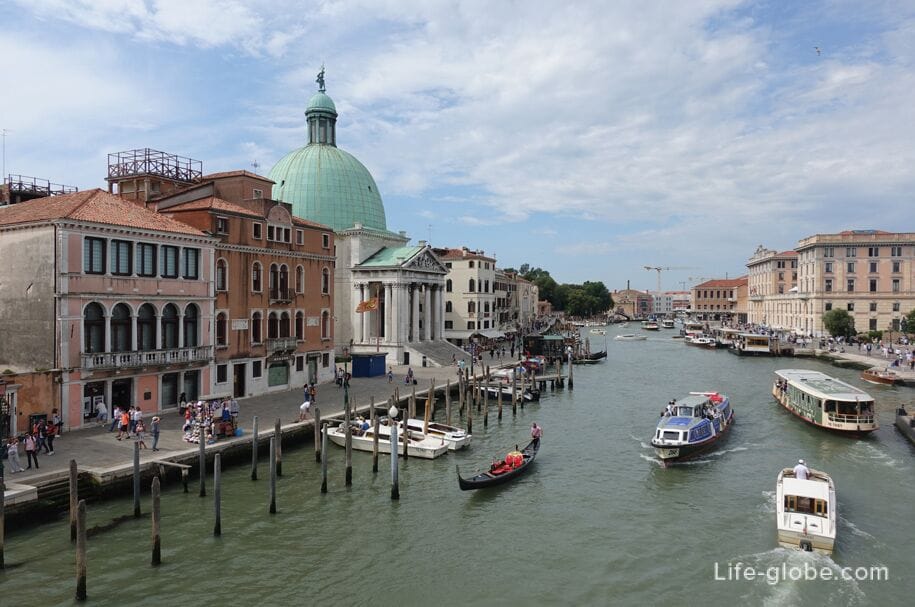
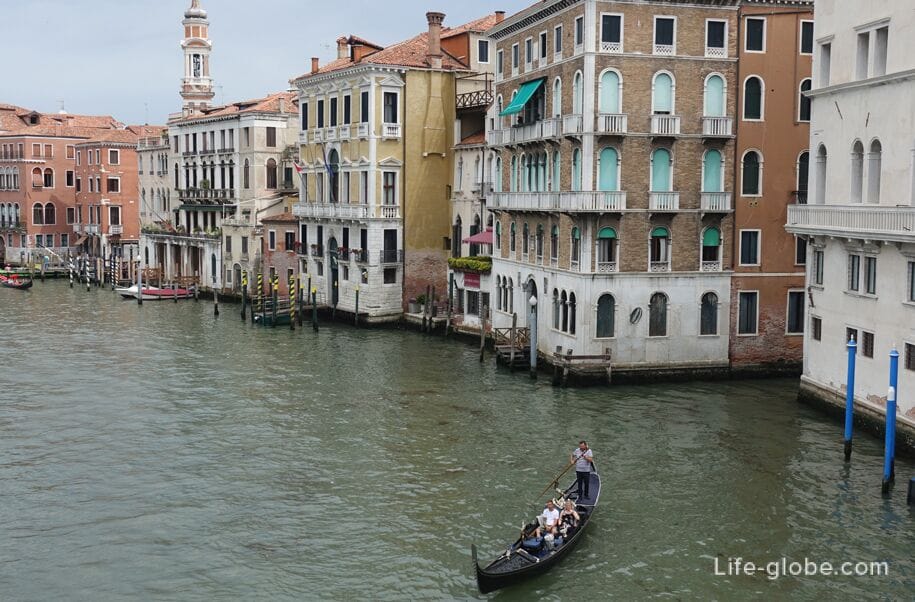
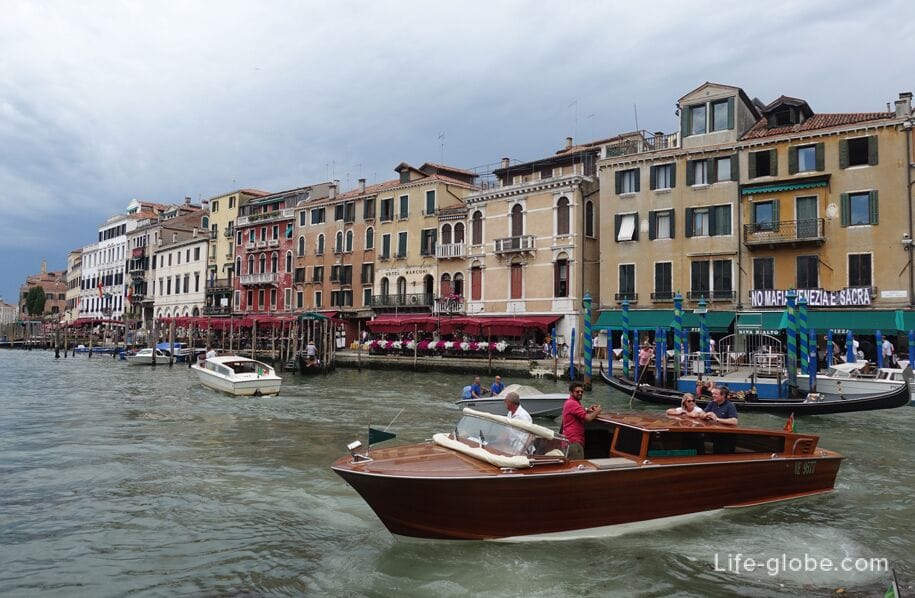
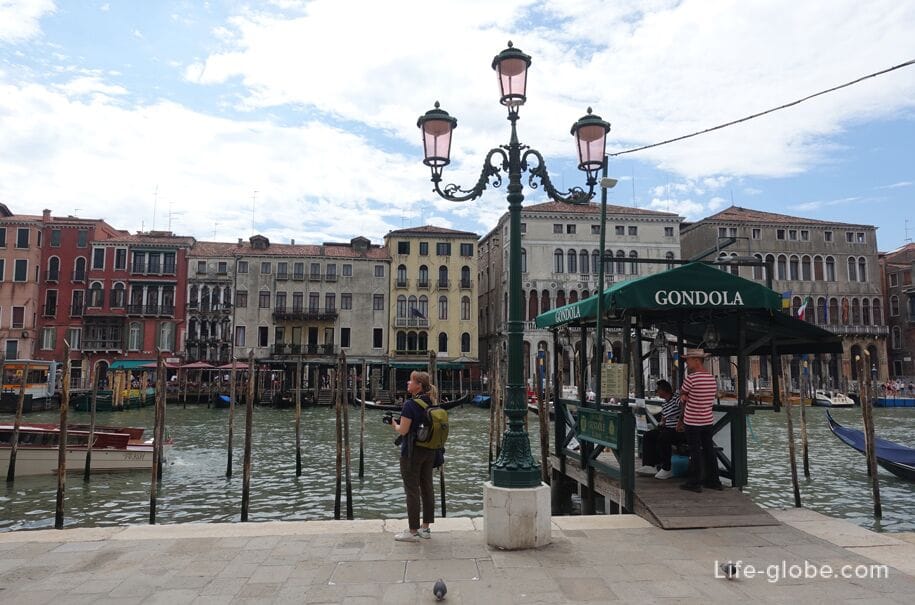
For a better study and leisurely enjoyment of the canal, it is worth considering the option of a tour of the Grand Canal and (or) other canals of Venice
In Venice, there are also tourist boats operating on the Hop-On-Hop-Off system and with an audio guide. They transport travelers through the central areas of Venice, as well as along the lagoon and to the islands of Murano, Burano and Torcello, which allows you to cover the main sights of Venice in a short time. The ticket is valid for 24 or 48 hours.
Palaces, churches and museums along the Grand Canal
Since the Middle Ages, the canal around which the city was born has been a vital center of trade and, accordingly, the most popular place for representative palaces of patrician families and the construction of warehouse houses (fondaco houses) - buildings combining a warehouse and a merchant's residence. Over time, the canal became more and more popular, and its banks were built up with buildings corresponding to the style of the current era, which led to the fact that the architecture along the Grand Canal became diverse, but very harmonious and bright.
Today, the Grand Canal is surrounded along its entire length by magnificent buildings, most of which were erected between the twelfth and eighteenth centuries. These buildings demonstrate the versatility of the development of architectural styles, as well as the prosperity and art created by the Republic of Venice.
Among the buildings there are numerous palaces and mansions (residences), some of which are now museums, there are also churches and a basilica. It is because of this that the Venetians also call their main waterway - the "Canal Palace" (Canalazzo).
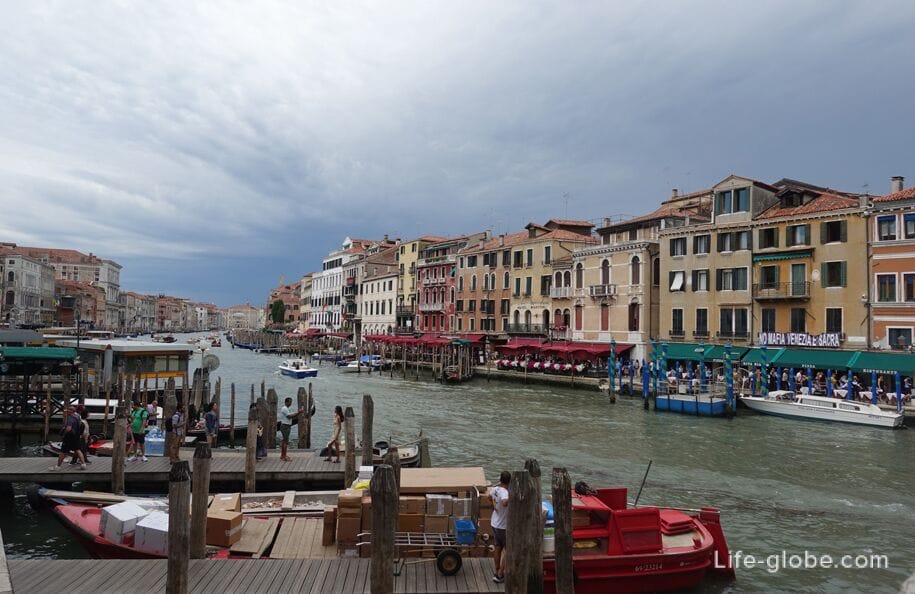
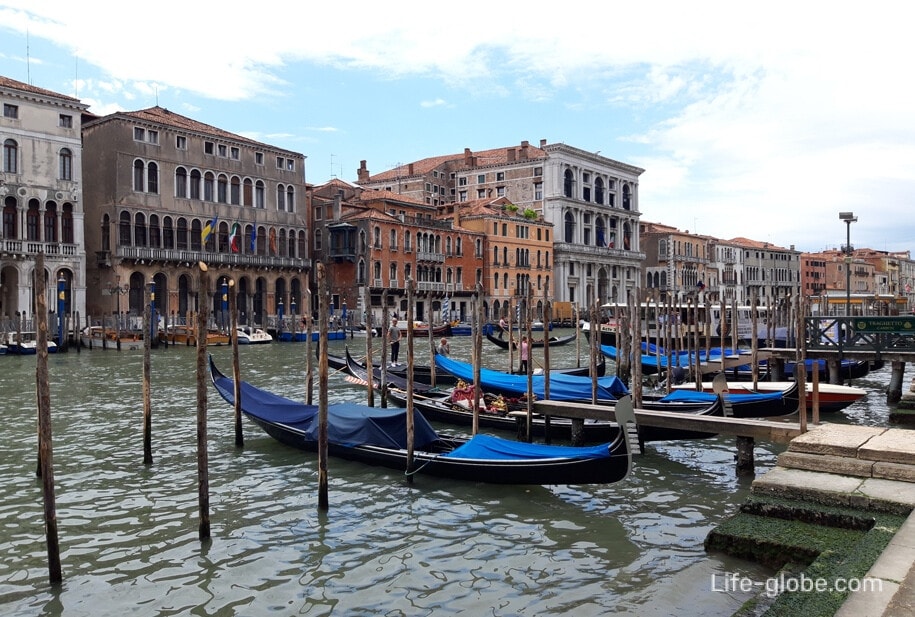
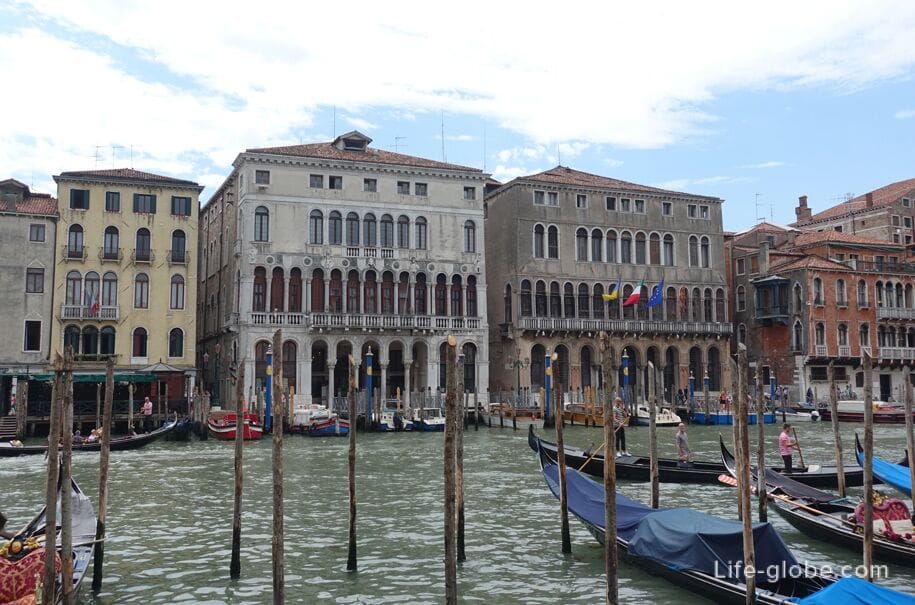
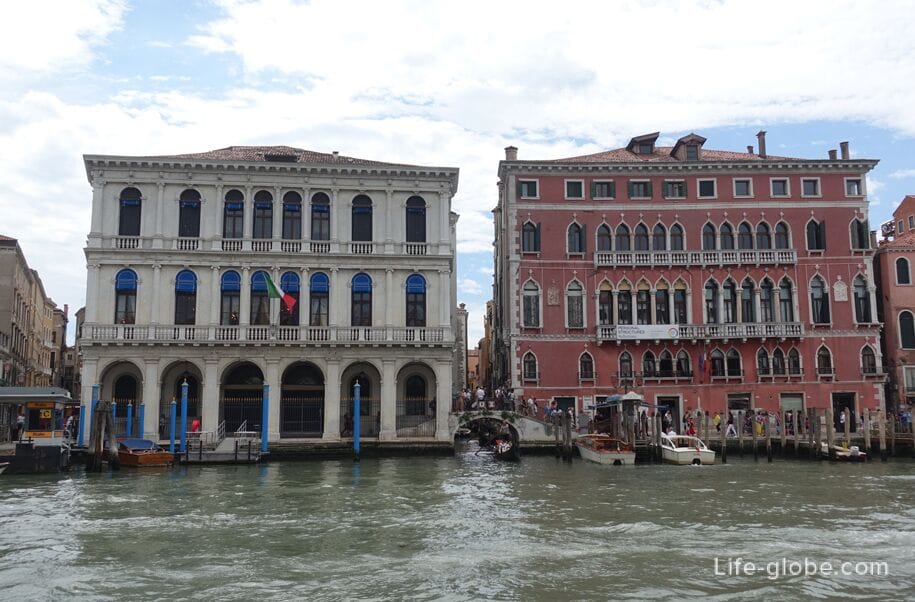
The "fondaco" houses in the Veneto-Gothic style along the canal are vividly expressed in the Fondaco dei Turchi building, which today houses the Venetian Museum of Natural History with a library (Museo di Storia Naturale Giancarlo Ligabue).
It is one of the earliest buildings in Venice. The palace was built in the first half of the 13th century by Giacomo Palmier, an exile from Pesaro. The Republic of Venice acquired it in 1381 for Niccolo II d'Este, Marquis of Ferrara. At the beginning of its history, the palazzo also served as a residence for many high-ranking guests. From the beginning of the 17th century until 1838, Fondaco served as the residence of the Ottoman Turkish population of Venice (hence the name of the palace "Turks").
The portico (curia) of the building closes the shore and facilitated the unloading of ships. From the portico, a corridor surrounded by storerooms leads to the backyard. Similarly, on the ground floor, a loggia the size of a portico illuminates the hall into which the merchant rooms lead. Thus, the facade is divided into an airy central part and two massive sides. The Fondaco house had side defensive towers (torreselle), restored in the 19th century.
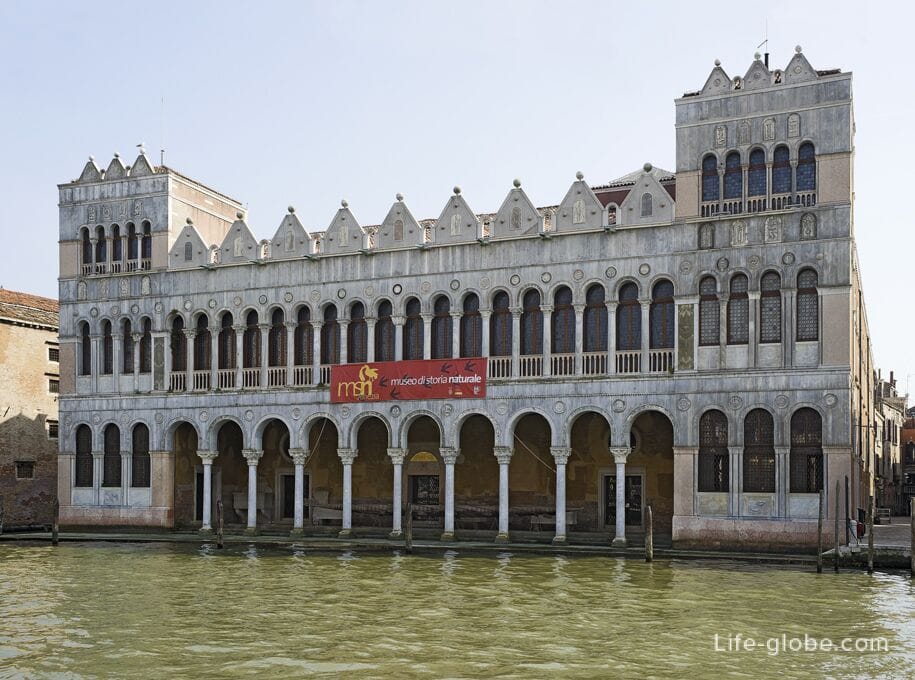
The Venetian-Byzantine style was expressed in the decorations of the houses of Fondaco patrician families with sculptures, friezes, columns and capitals. In architecture, this style is characterized by large loggias with round or oblong arches, an abundance of polychrome marble.
Along the Grand Canal, these elements are well preserved in the buildings of Ca'farsetti (Ca' Farsetti), Ca'loredan (Ca' Loredan) and Ca'da Mosto (Ca' da Mosto), which date back to the 12th-13th century. The first two buildings are used by the Municipality of Venice.
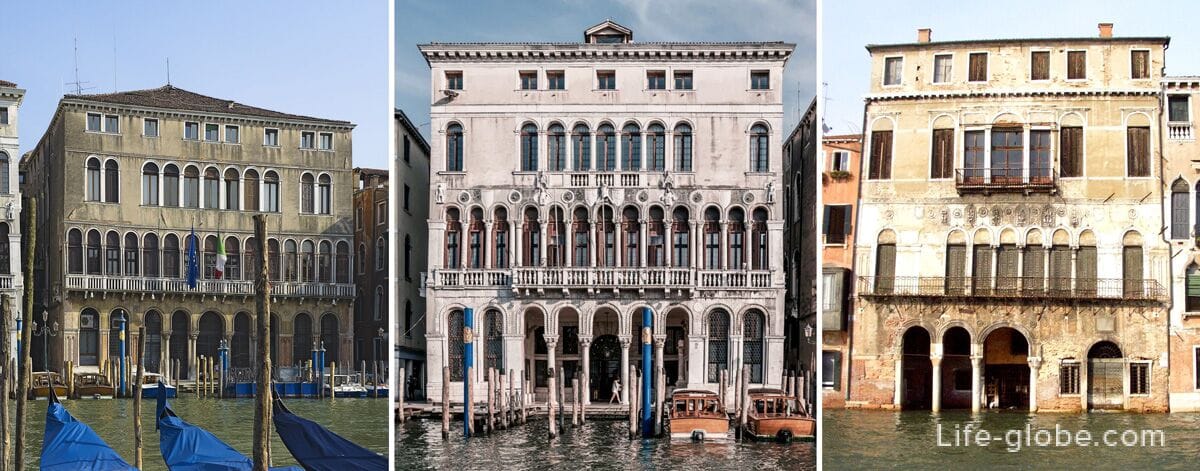
Venetian Gothic architecture (14th-15th centuries) along the canal is characterized by the verticality and illumination of porticos and loggias of houses: columns thin out, elongated arches are replaced by pointed or lobed ones; porticos smoothly intertwine and draw open marble in the form of a quatrefoil or similar figures; and facades were plastered with bright colors.
Among the palaces of the 15th century, which still retain their original appearance along the Grand Canal, stand out: Ca' d'Oro (Ca' d'Oro, also known as Palazzo Santa Sofia / Palazzo Santa Sofia), Palazzo Bernardo a San Polo (Palazzo Bernardo a San Polo), Ca'Foscari (Ca' Foscari, which now houses the University of Venice), Palazzo Pisani Moretta (Palazzo Pisani Moretta, where masquerade balls are held), Palazzo Barbaro (Palazzo Barbaro), Palazzo Cavalli-Franchetti (Palazzo Cavalli-Franchetti), Palazzo Loredan dell'ambasciatore (Palazzo Loredan dell'ambasciatore) and the Church of Santa-Maria della Carita (Chiesa di Santa Maria della Carit), which now houses the Gallery of the Academy in Venice (Gallerie dell'Accademia), famous for Venetian art with works by Titian, Canaletto, Bellini, Tintoretto and others.
Today in Ka'd'Oro is the Galleria Giorgio Franchetti, and the Palazzo Cavalli-Franchetti is an art museum where exhibitions and cultural events take place.
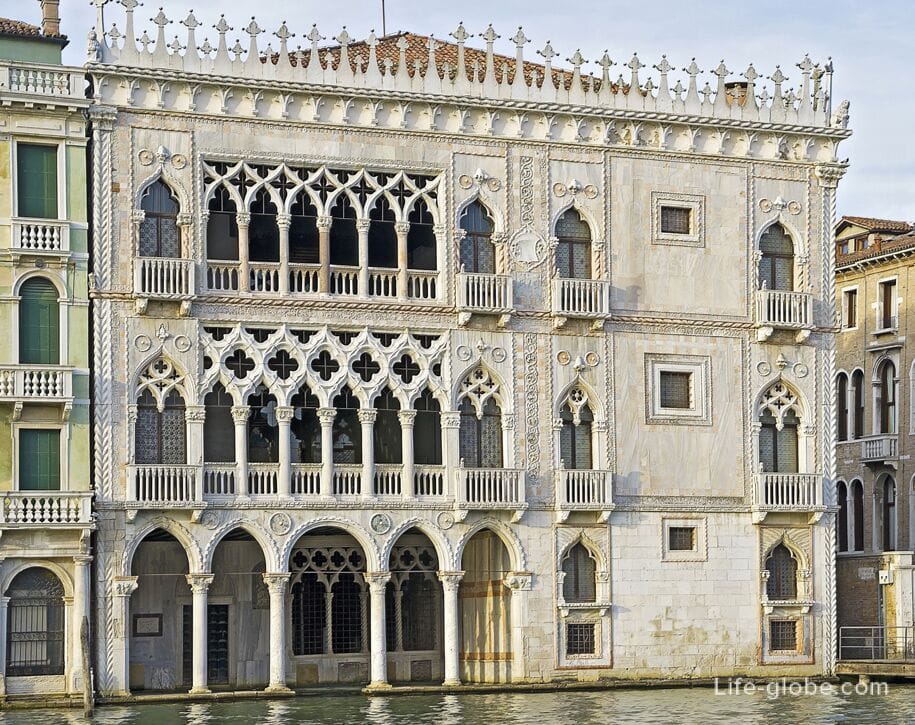

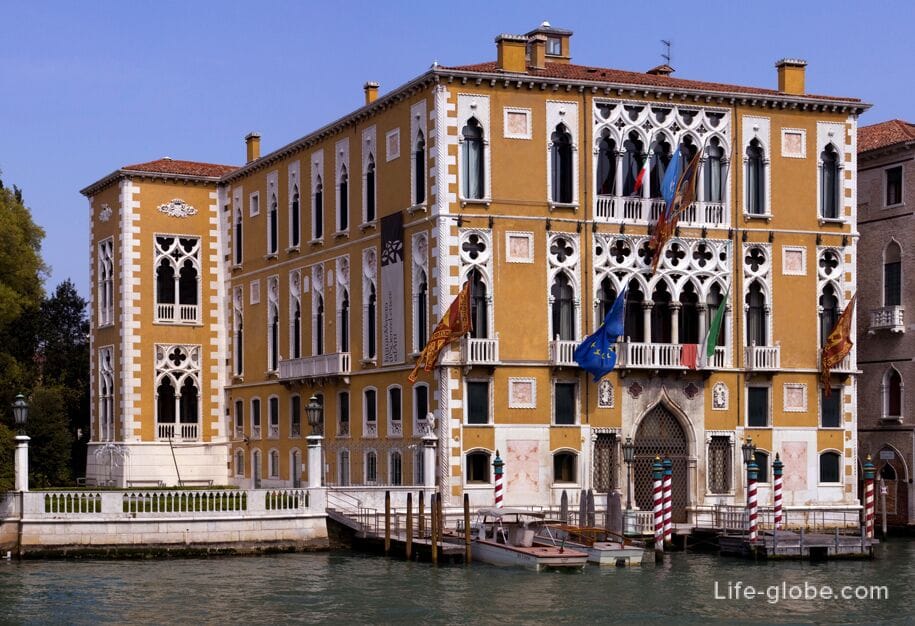

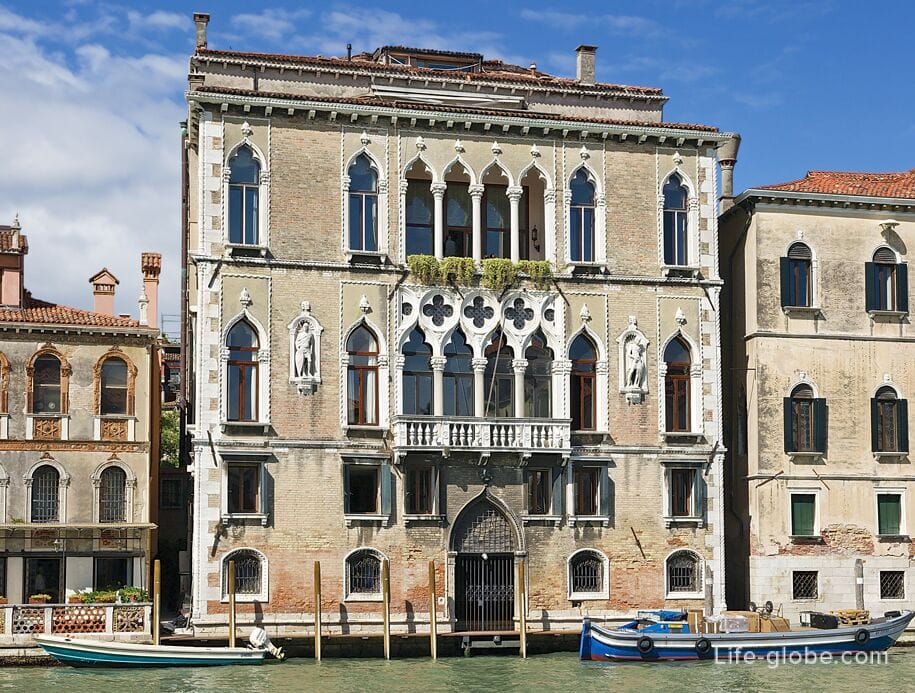
The unsurpassed and grandiose Renaissance or Renaissance era is reflected in numerous and large windows, marble, openwork, frescoes, arches and columns. Famous masters of that time worked on the projects and design of buildings.
Renaissance is reflected in such buildings along the Grand Canal as: Palazzo Dario (Palazzo Dario), Palazzo Corner Spinelli (Palazzo Corner Spinelli), Ca 'Vendramin Calergi (Ca 'Vendramin Calergi, where the Casino of Venice / Casino di Venezia and the Wagner Museum / Museo Wagner); Palazzo Corner (Palazzo Corner della Ca' Grande, is the current residence of the province of Venice and the prefecture of the city) and Palazzo Dolfin Manin (Palazzo Dolfin Manin), known for its grandiosity, horizontal arrangement of white facades and buildings around the central courtyard; as well as Palazzo Papadopoli (Palazzo Papadopoli, where the Foresteria Levi Hotel is now open) and Palazzo Grimani di SanLuca (Palazzo Grimani di San Luca, where the Venice Court of Appeal is now located).
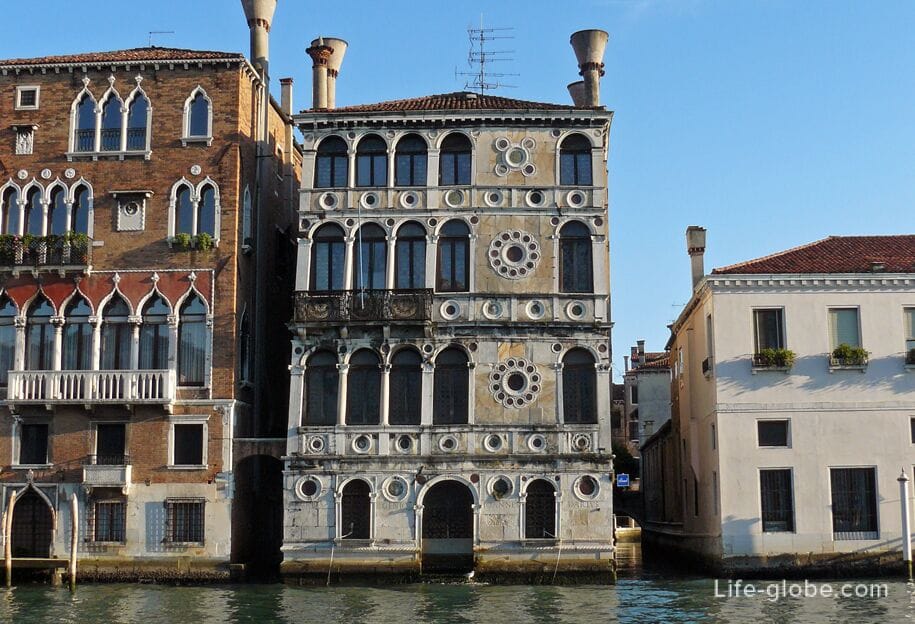
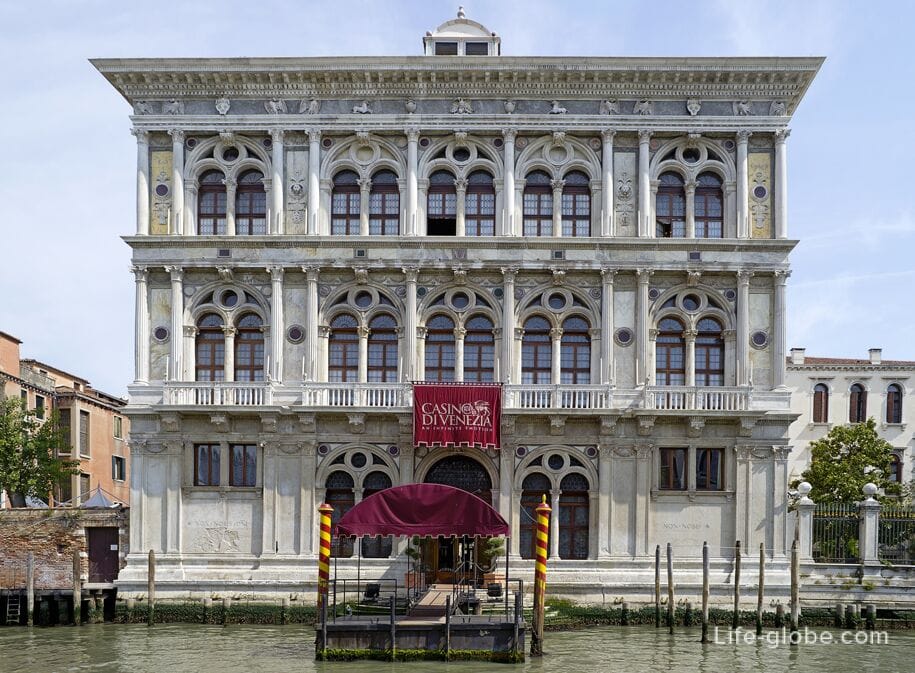
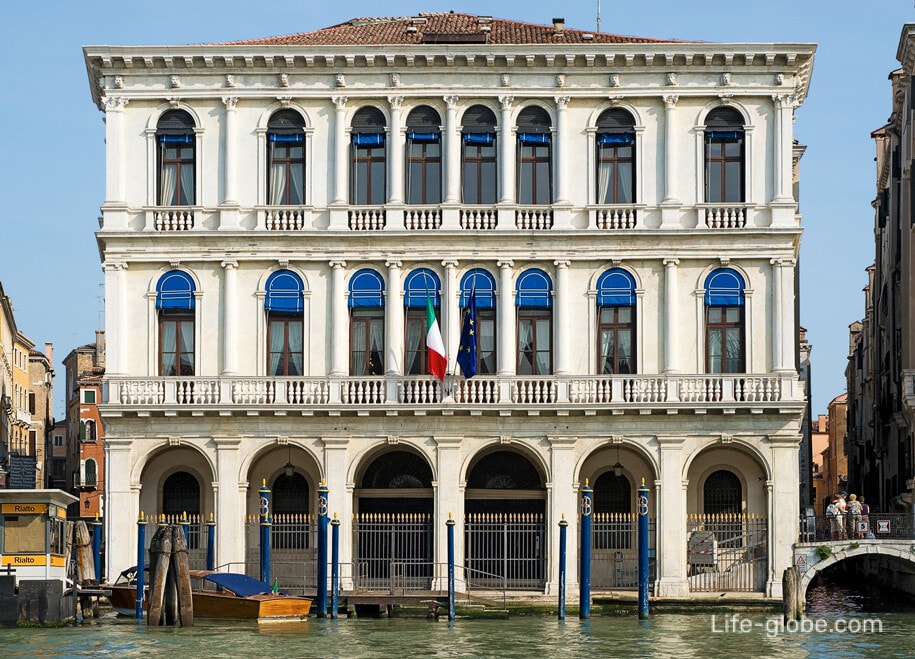

The famous Venetian Baroque (17th century) is reflected in the stucco cornices, broken pediments, sculptural figures and ornamental motifs.
The main architect of the Baroque era in Venice was Baldassarre Longena. It was he who in 1631 began the construction of the magnificent Basilica of Santa Maria della Salute (Basilica di Santa Maria della Salute) on the Grand Canal. The Church of the Virgin of Health was erected as a vow for the deliverance of the city from the plague.
The Basilica is one of the most beautiful churches in Venice and a symbol of the Grand Canal. The classical layout of the facade is distinguished by decorations and many statues, crowning also the exquisite curls surrounding the main dome.
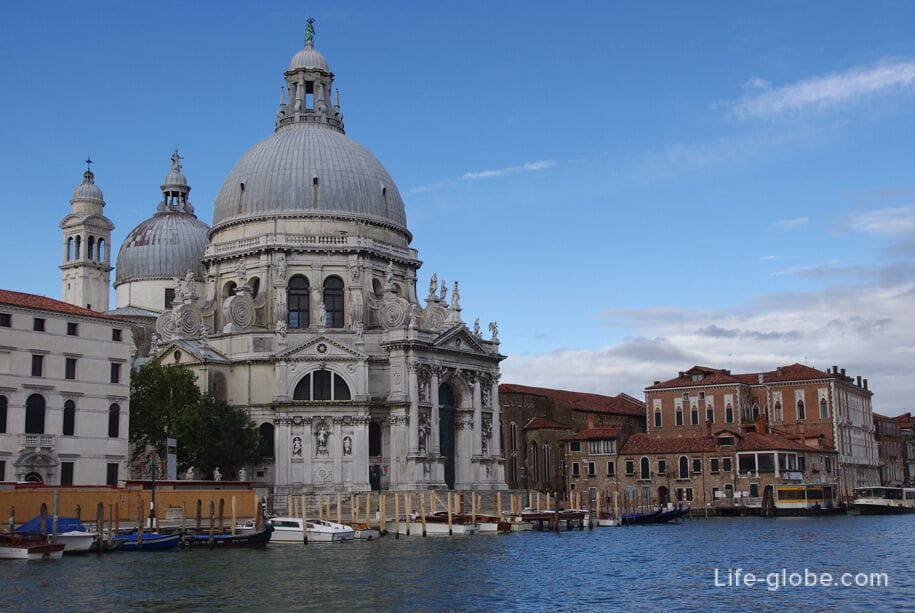
The beautiful little church of Santa Maria di Nazareth (Chiesa di Santa Maria di Nazareth), also known as the Church of Scalzi (Chiesa degli Scalzi), also belongs to the Venetian Baroque style, since it is located near the Scalzi Bridge over the Grand Canal. More about the Church of Scalzi...
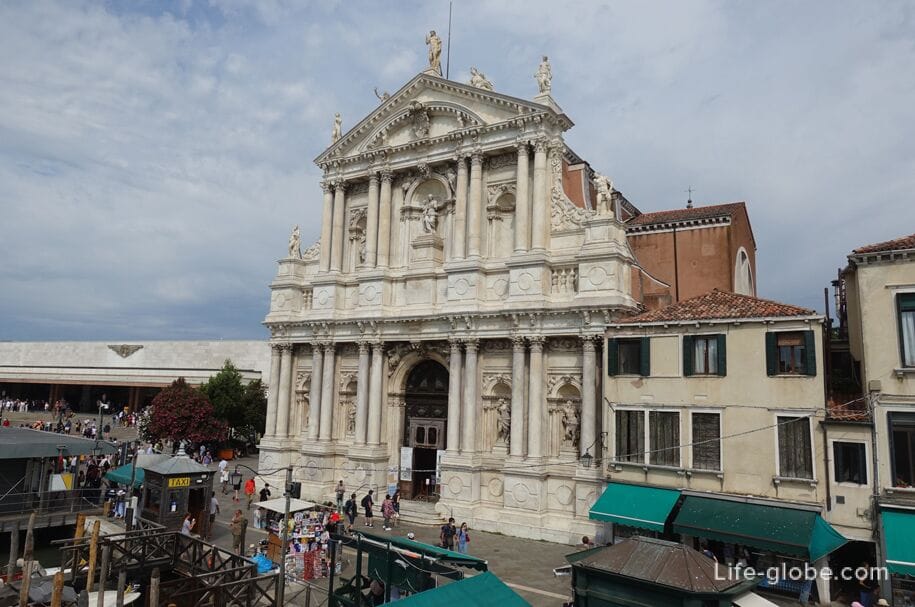
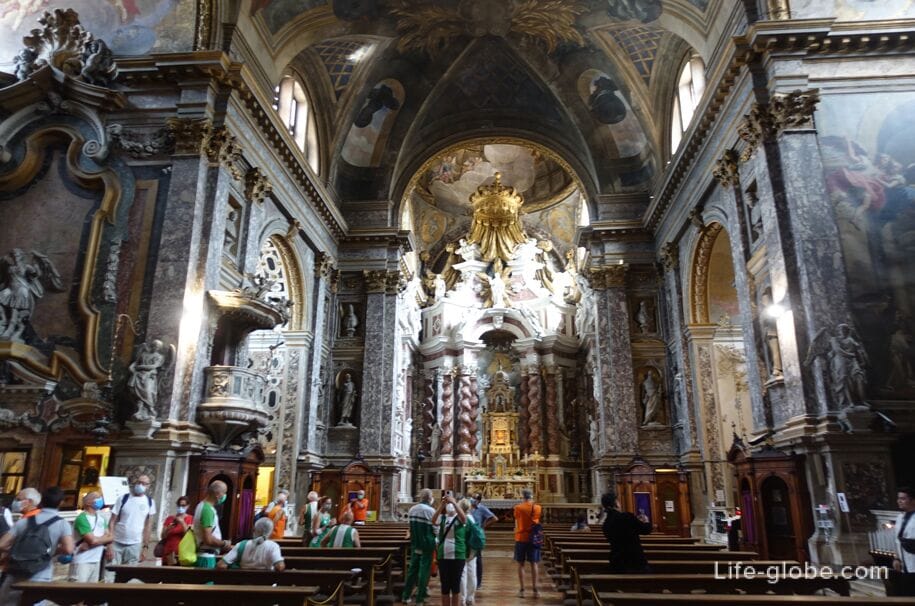
Of the palaces that are prime examples of the Venetian baroque, this is:
- Ca' Pesaro (Ca' Pesaro, which houses the International Gallery of Modern Art / Ca' Pesaro Galleria Internazionale d'ARTE Moderna) and Ca' Rezzonico (Ca' Rezzonico, where there is a museum dedicated to Venice of the 18th century with paintings and furniture / Museo del Settecento Veneziano), designed by Italian architect Baldassarre Longenom. Ca 'Rezzonico was completed by Italian architect Giorgio Massari;
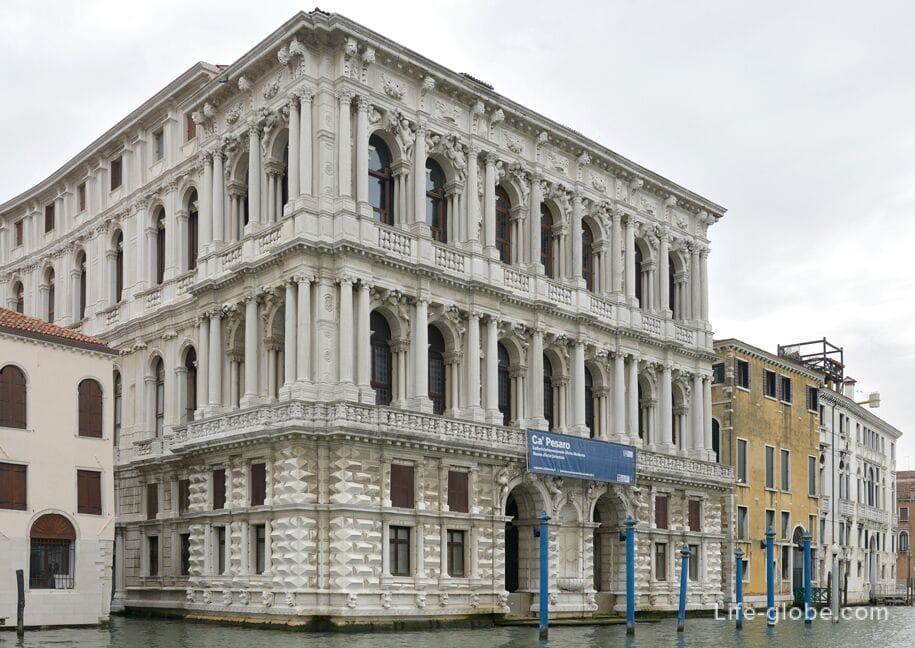

- the Church of San Stae (Chiesa di San Stae) and the Palazzo Corner della Regina, where the Prada Foundation exhibition space is located, whose facades were created by the famous Swiss-Italian architect Domenico Rossi.


The neoclassical architecture along the Grand Canal dates back to the 18th century, in the first half of which the Church of San Simeon Piccolo (Chiesa di San Simeon Piccolo) was built with an impressive Corinthian portico, a central plan and a high copper-covered dome ending in the shape of a small temple. More about the Church of San Simeon Piccolo...

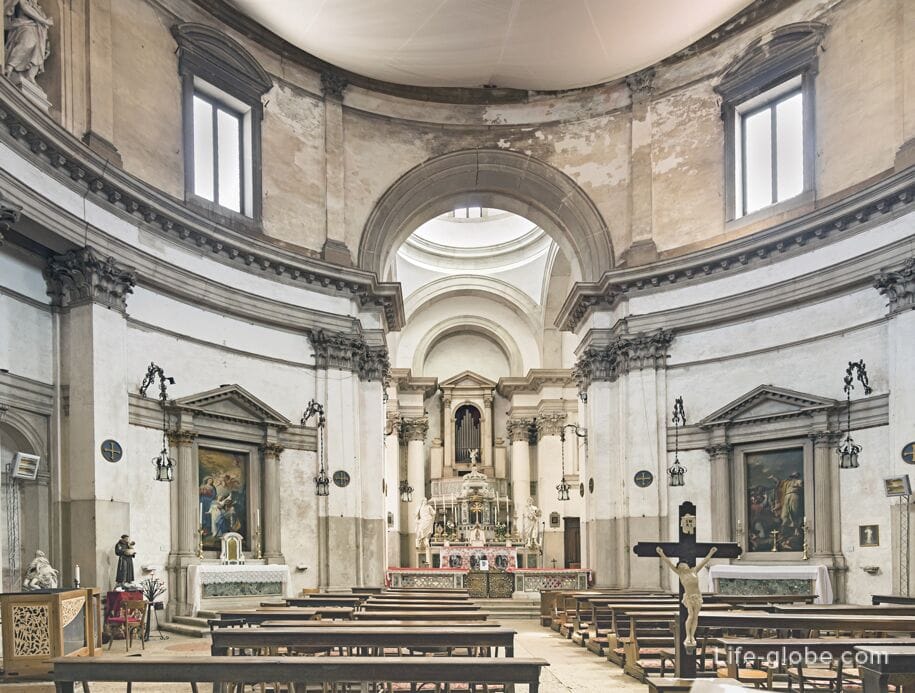
Neoclassicism along the Grand Canal is clearly expressed in the Palazzo Grassi, designed by the Italian architect Giorgio Massari and rebuilt between 1748 and 1772.
Today, the building houses a theater and a museum of modern art with a collection of works collected by Frenchman Francois Pinault, who owns the building. Website: palazzograssi.it .
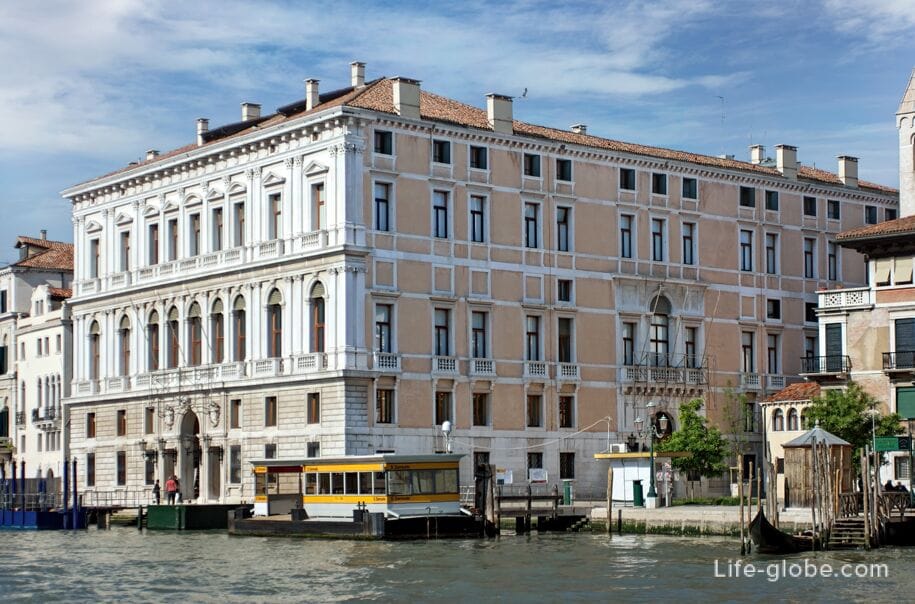
The modern era in the architecture of Venice begins after the fall of the Republic of Venice in 1797 and completes the construction of palaces. At that time, most of the palace construction in Venice was suspended, as evidenced by the unfinished Church of San Marcuola and the beautiful Palazzo Venier dei Leoni, which is a museum of modern art with the Peggy Guggenheim Collection and an internal garden with sculptures.


At the same time, after the fall of the republic, patrician families, deprived of their hereditary role in government and sometimes persecuted by revolutionary forces, left the city, and several historical palaces were demolished. At the same time, many of the palaces found other uses, and some restorations preserved their 18th-century appearance. By the end of the 20th century, most of the most famous palaces belonged to the city, the state or public institutions.
In the era of the Napoleonic kingdom, when the suppression of monastic religious orders took place, large plots of real estate in the city became free. It also released a large amount of furniture and works of art to the antique market or to the ownership of the state. Major monasteries have changed functions: the Santa Maria della Carita complex became the Academy Gallery Museum; the Santa Croce complex was transformed into the Papadopoli Gardens; and the Santa Lucia complex (partially designed by Palladio) It was demolished to create the Santa Lucia railway station (Venezia Santa Lucia railway station).

Shopping center with panoramic terrace on the Grand Canal
Next to the Rialto Bridge on the Grand Canal is the shopping center "T Fondaco", which has a panoramic terrace "T Fondaco dei Tedeschi" with spectacular views of the canal and part of Venice.
Access to the terrace is free, but the place must be booked in advance online on the website, or directly when visiting the shopping center, if there are free seats.
Website: dfs.com/it/venice .
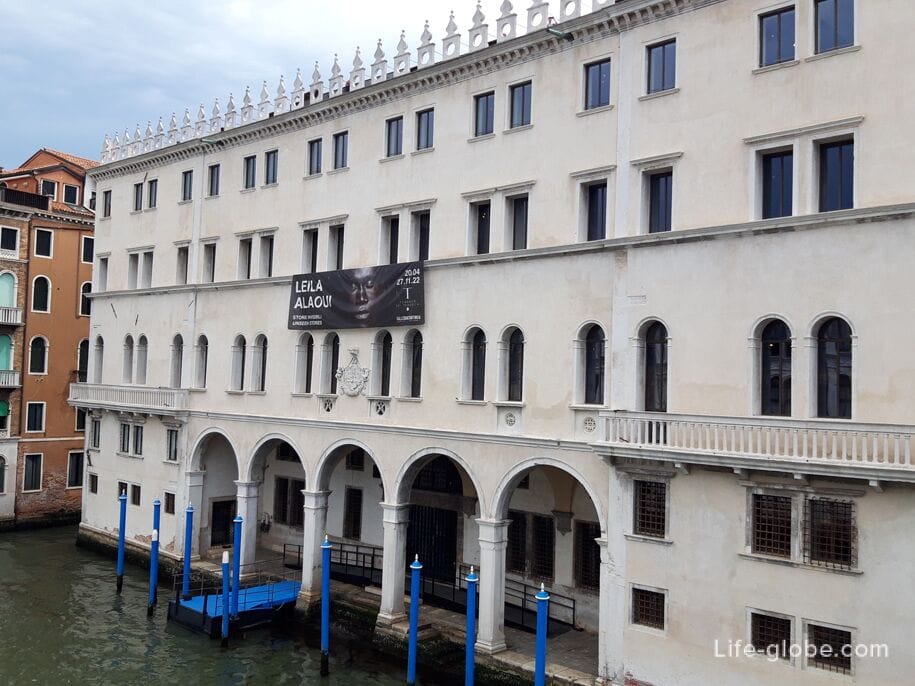
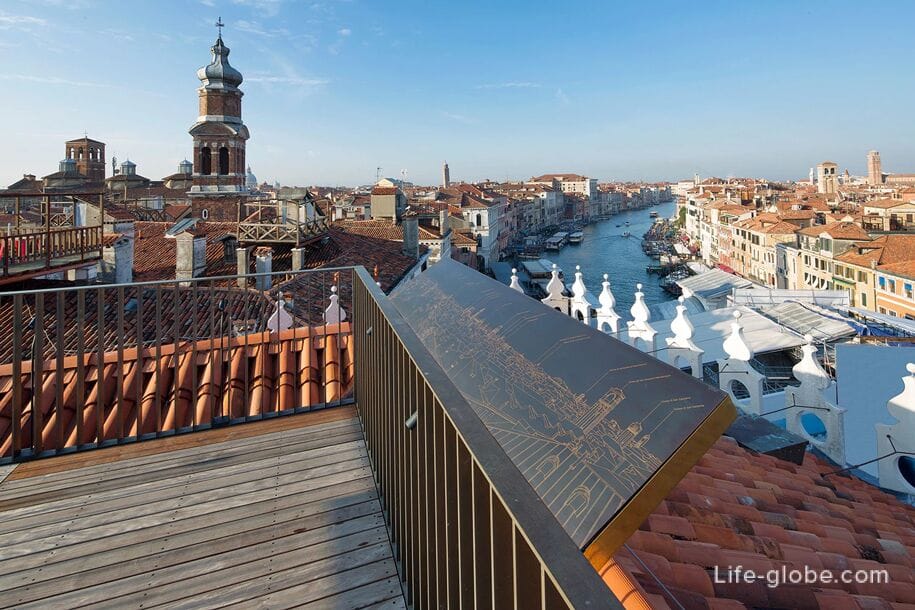
Grand Canal Park
In the northwestern part of the Grand Canal, near the Constitution Bridge and Santa Lucia station, where the Grand Canal meets the canal "Young" (Rio Novo, Rio Novo), there are public Gardens of Papadopoli (Giardini Papadopoli).
This is a pleasant green place with places to relax and paths for walking, which like an oasis welcomes guests among the dense buildings of the historic island of Venice.
Entrance to the gardens is free.
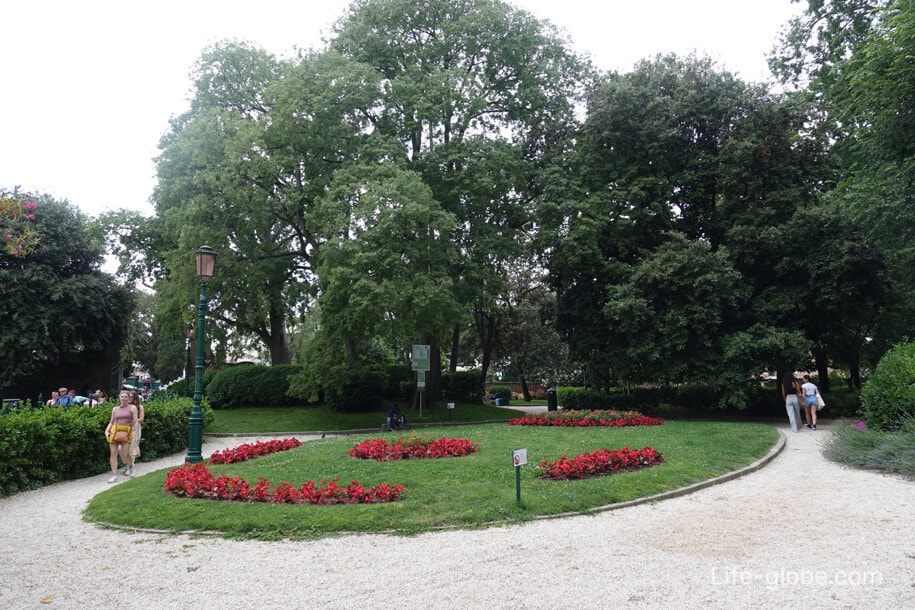
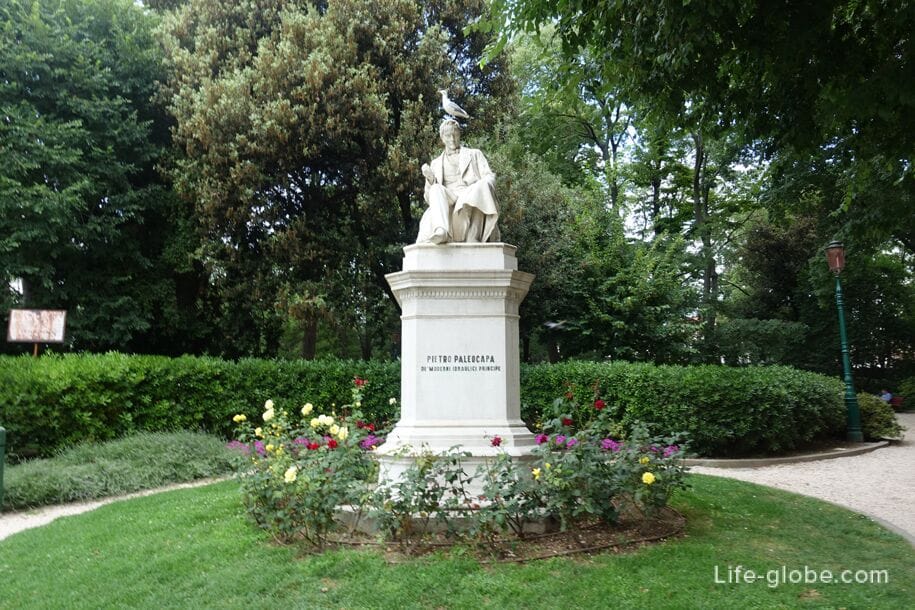

View of the canals and the park


Historical Regatta on the Grand Canal
Every year, on the first Sunday of September, the Grand Canal hosts a Historic Regatta (Regata Storica) - a competition between Venetian boats, which is watched by thousands of people from the shores or from floating stands.
The competition is preceded by a historical procession (Corteo Storico) dedicated to the entrance of Queen Katerina Cornaro of Cyprus after the abdication of the throne in 1489: gondoliers in costumes sail on typical boats of the 16th century after Bucintoro (Bucentaur) - a Venetian ceremonial galley, which was the official galley of the Doge of Venice.
Website: regatastoricavenezia.it .

Hotels near the waters of the Grand Canal
Along the banks of the Grand Canal, in historical restored palaces and mansions, there are hotels and apartments (full-fledged apartments with all amenities).
Some of these accommodations have terraces and views of the most beautiful Venetian canal - the Grand Canal.
From hotels
5-star Hotel Gritti Palace, a Luxury Collection Hotel, Venice with a view of the Grand Canal, restaurant, bar, spa and wellness center, free Wi-Fi.
It offers luxurious rooms and suites decorated with antique items and Murano glass interior elements.
The rooms are equipped with air conditioning and a flat-screen TV with satellite channels. There is a private bathroom with bathrobes and slippers.
Breakfast may be included in the room rate. Link to the hotel
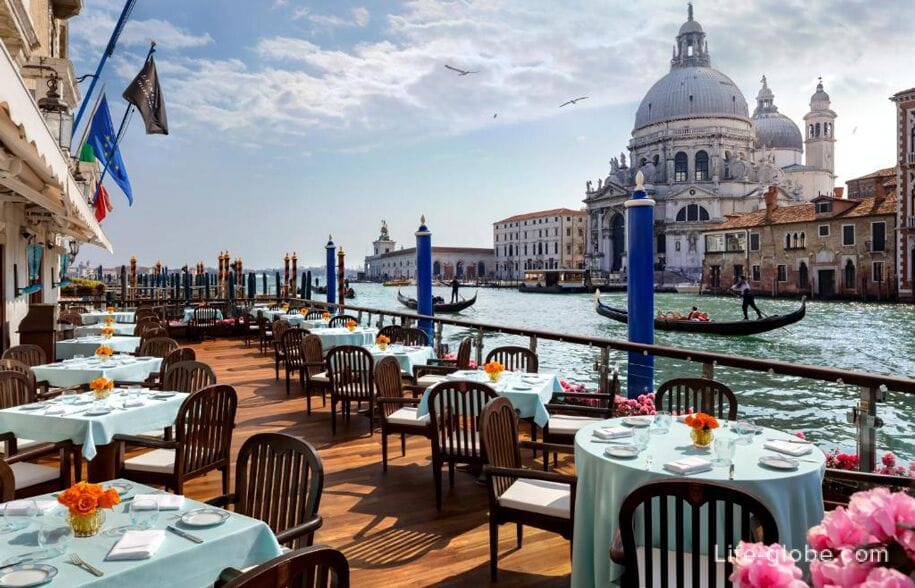
Ca' Sagredo Hotel is a 5-star hotel with a view of the Grand Canal, decorated in Venetian style, a restaurant, a bar and free Wi-Fi.
The rooms are decorated with antique furniture and original works of art.
The rooms are equipped with: free toiletries, bathrobes, slippers, safe, bidet, work desk, TV, satellite channels, heating, hairdryer, wardrobe, air conditioning and air purifiers.
Breakfast may be included in the room rate. Link to the hotel
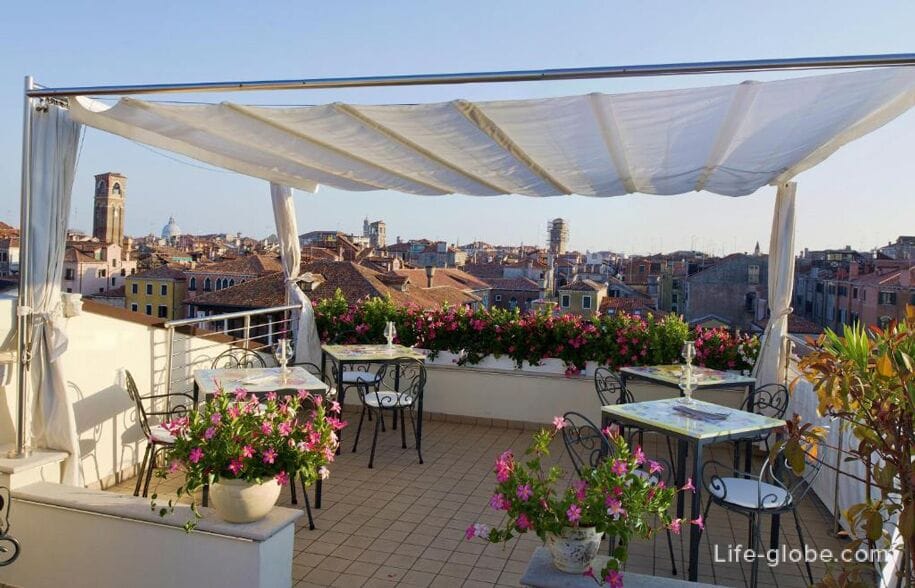
Ego Boutique Hotel The Silk Road is a 4-star boutique hotel with views of the Grand Canal and the city, concierge service, luggage storage, 24-hour front desk and free Wi-Fi.
The rooms are equipped with air conditioning, a coffee machine, a desk, a kettle, a minibar, a safe, a flat-screen TV and a private bathroom with a bidet.
Breakfast is included in the room rate. Link to the hotel
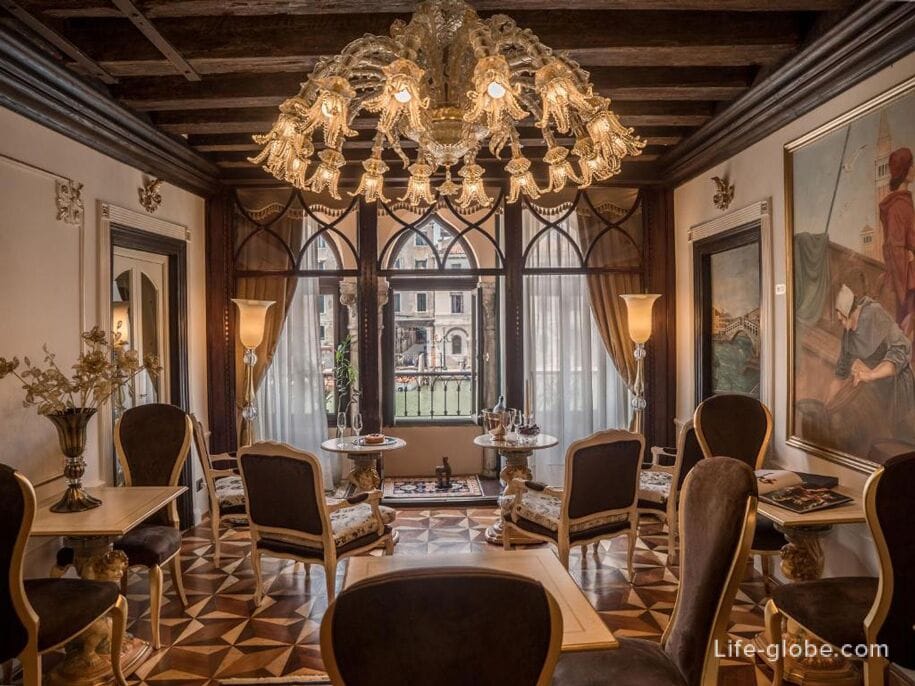
4-star boutique Hotel Sina Palazzo Sant'Angelo with its own pier, courtyard with garden, bar and free Wi-Fi.
The lobby of the hotel has a beautiful Palladian floor and precious tapestries overlooking the Grand Canal.
The rooms are decorated in the Venetian style of the 18th century.
In the rooms: safe, mini-bar, air conditioning, heating, TV, satellite channels, work desk, bathrobes, slippers, hairdryer, marble-finished spacious bathroom with a spa bath, bidet and free toiletries. The rooms offer views of the Grand Canal or the courtyard with garden.
Breakfast is included in the room rate. Link to the hotel
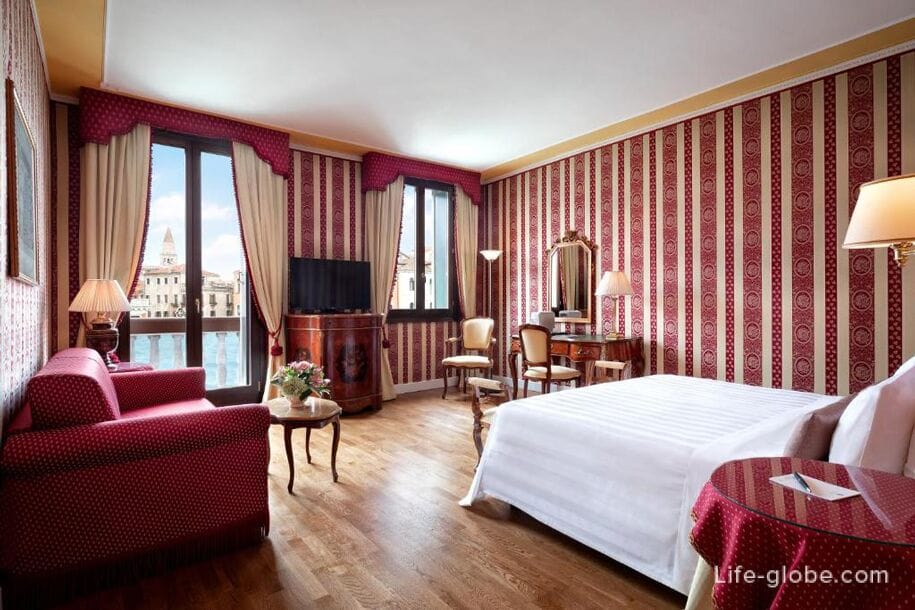
From the apartment
Ca' Mainella Grand Canal with 4 bedrooms, living room, air conditioning, coffee machine and free Wi-Fi
Ca' Remer Grand Canal with 2 bedrooms, terrace, coffee machine and free Wi-Fi
All accommodation in Venice, including those in the historic centre, near the Grand Canal and other canals of the city, and further away from them, can be view and book here
Coordinates of the Grand Canal
Istok - Venetian Lagoon (Freedom Bridge): 45°26'32.0"N 12°18'56.0"E (45.442222, 12.315556);
Estuary - Venetian Lagoon (San Marco Basin): 45°25'53.0"N 12°20'11.0"E (45.431389, 12.336389).






